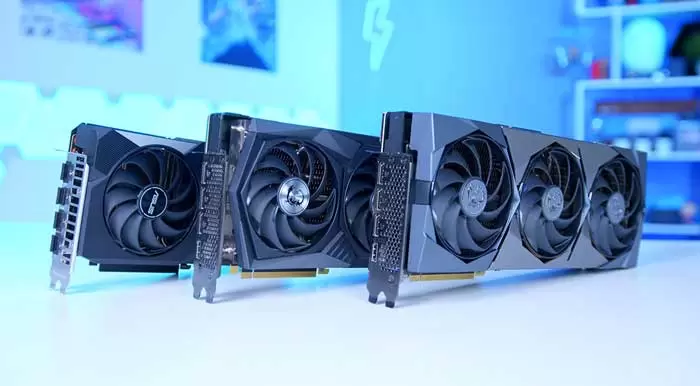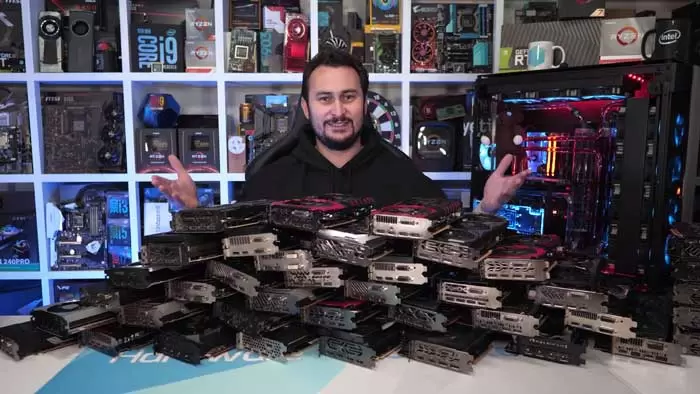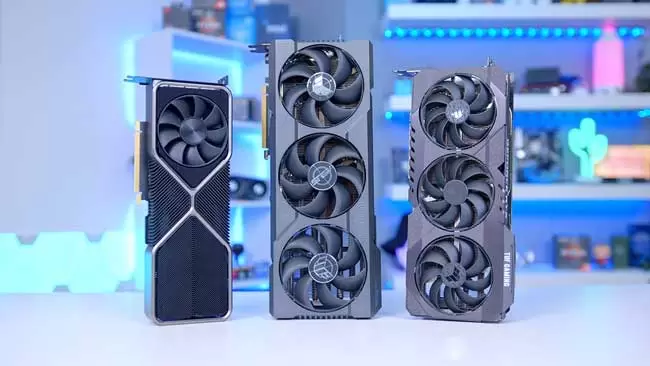How to Choose the Best Graphics Card for PC
These days the graphics card market is very hot and new models are constantly being added which make it harder for us to choose. If you are thinking of buying a system for gaming, stay with us with this short guide. Here we inform you with the principles that you should consider for buying a suitable graphics card.
Before choosing a graphics card, you should consider various aspects such as power, memory, clock speed, bandwidth and resolution of your monitor. Like the processor, the graphics card plays an important role in the performance of the computer. Be sure to check everything before making a final decision.
Comparison of AMD and NVIDIA: which one is better?
Currently, the two leading manufacturers of graphics cards are AMD and NVIDIA. These two graphics card giants have recently licensed their cards to other companies such as MSI, ASUS, EVGA and many others. Both companies offer different types of software, cooling tools and hourly rates on their cards.
Now the question is, which company makes the best graphics processors? Both companies have advantages and disadvantages and offer different graphics cards. Some may appreciate NVIDIA’s performance according to their budget, and others may go for AMD.
AMD is known for providing affordable mid to high end graphics cards. The recent AMD Navi RX 5000 series cards of this company are serious competitors to NVIDIA in terms of power. Nvidia definitely has better quality, speed and technologies, but AMD offers better prices. In general, this is the difference.

But again, when it comes to high-end graphics cards, NVIDIA is the pioneer. The extraordinary RTX cards of this brand are considered the best graphics cards of 2020, which have always been in great demand.
The type of games you want to play will determine what you should look for when buying a graphics card. If you play games that put a lot of pressure on the GPU, you should invest in a powerful graphics card.
Grand Theft Auto V are some of the most popular games that require a more powerful GPU. If you are not interested in playing such computer games, you can buy a cheaper graphics card and save money.
Display resolution
You must also pay attention to the resolution of your games. In fact, the higher the resolution of your monitor, the more powerful your graphics processing unit should be.
Computer games at higher resolutions require a higher graphics card. For example, if you have a 4K monitor, you must also have a great graphics card so that you can enjoy playing games more.
Monitor refresh rate
When choosing a graphics card, in addition to the resolution, you should also consider the refresh rate of your monitor. The refresh rate is the number of times your monitor can update new images per second. For example, a 60Hz refresh rate means that your monitor updates its image 60 times per second. If your monitor has a high refresh rate, you need a powerful graphics card to get the most out of it.
Graphics card compatibility with power supply
When choosing a graphics card for gaming, you should also check its compatibility with the power supply. Since graphics cards consume more energy than other computer components, we recommend choosing a powerful power supply to handle this.
Do not forget to check the compatibility of your graphics card with the motherboard, RAM and other key components of the computer.
Do not ignore the thermal design parameter
Thermal design parameter or TDP is used to measure heat loss. This parameter shows you how many watts your graphics card needs for initial settings. It is good to know that TDP in CPU stands for thermal design power, while in graphics cards it means thermal design parameter. This parameter in graphics cards is very similar to the TDP of processors and is defined by the manufacturer like the graphics card and refers to the thermal parameter that each GPU produces.

Of course, this is not a very accurate quantity to measure GPU energy consumption, because energy consumption is measured in electrical watts, but the heat caused by the GPU is measured in thermal watts. Both are essentially the same, but the latter measures the heat generated by the card.
So when choosing a GPU, if you are using a 400W power supply with a 95W CPU, you should keep this in mind. In such a situation, you should add a graphics card with a thermal design parameter of 250 watts and definitely upgrade your power supply unit. Your 400 watt power supply is not enough.
In general, 600 watt power supplies are suitable for most graphics cards. If you’re going for a card like the Nvidia RTX 3080 or AMD RX 6800 XT, you’ll need a more powerful power supply, especially if you plan to overclock the cards. If you have a high-end GPU, it is recommended to get a standard 800W Gold power supply.
Ray tracing; The latest graphic advancement
Like most computer hardware, GPU technology is advancing at the speed of light! An example of this evolving graphics technology is continuous ray tracing. Ray tracing technology has made it possible to display more realistic lighting effects that more accurately simulate the way light and reflections behave in the real world.

Nvidia describes this technology as follows:
Ray-tracing technology measures the color of pixels by tracing the path that light travels through the viewer’s eye in a virtual 3D scene. As light travels through the scene, it may reflect from one object to another (causing reflections), be blocked by objects (causing shadows), or pass through transparent or semi-transparent objects (causing refraction). will be).
Ray tracing and other similar graphics technologies have been the goal of the computer industry for years, and now hardware and software have reached that goal. Today, normal GPUs have the power to perform effective ray tracing in games. Although this technology is not yet widespread, it will undoubtedly become a common feature as GPUs become more powerful.
Since this technology is so new, GPUs that can do real-time ray tracing are more expensive. But it is possible that they will become cheaper in the near future. Most modern flagship GPUs from AMD and Nvidia support some version of this technology, and more will become available with each new version of graphics cards.











